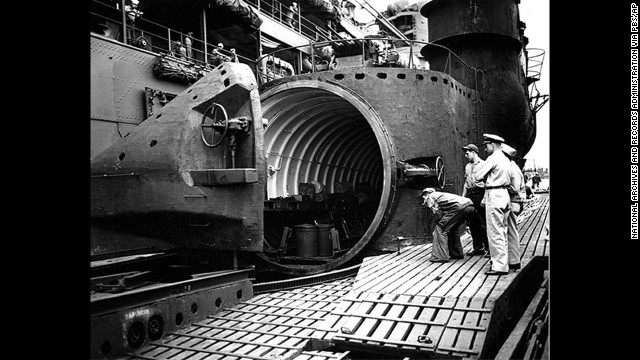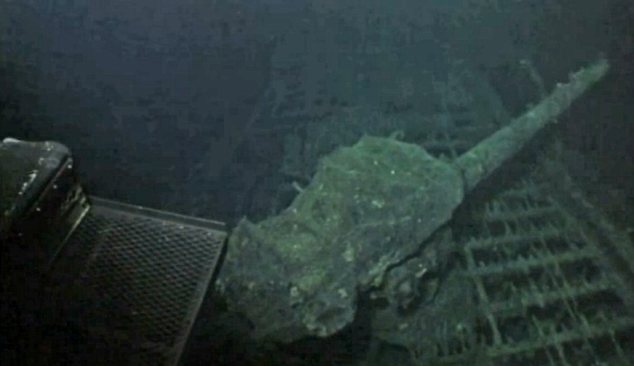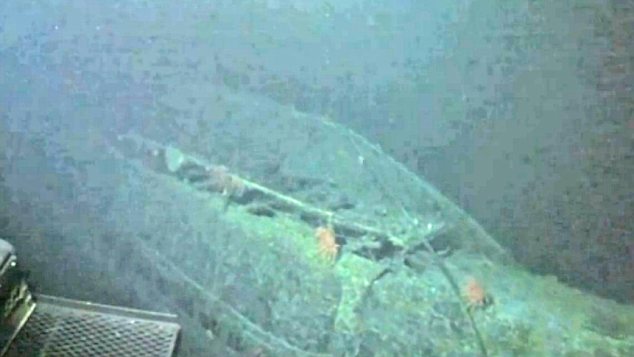At the height of World War II, Japanese submarines prowled throughout the Pacific ocean, ready to interrupt the shipment of military gear and personnel, and preparing to strike against strategic targets in Hawaii and beyond.
One of the largest submarines was the 400-foot Sen-Toku class vessel – among the largest non-nuclear submarines ever built. These subs had the impressive capability to travel one and a half times around the world without refueling. The subs could also carry up to three folding-wing bomber planes, and were designed to surface, launch the planes, then submerge within minutes, before being discovered. They were a formidable threat and technological marvel at the time. While initial plans were for 18 subs, only 3 Sen-Toku class subs were completed

U.S. Navy personnel inspect the watertight hangar of the I-400 aircraft carrier submarine.
At the end of the war, the U.S. Navy boarded and recovered 24 Japanese submarines, and four subs, (the I-400, I-401, I-201 and I-203) were sailed to Hawaii by U.S. Navy technicians for inspection. Upon completion of the inspections, the submarines were scuttled in the waters off Kalaeloa near Oahu in Hawaii by torpedoes from US submarine USS Trumpetfish on June 4, 1946, to prevent the technology from being made available to the Soviets who were demanding access to them.
After more than 60 years on the ocean bottom, the submarines were largely forgotten, being slowly reclaimed by the sea. In August, off the southwest coast of Oahu, the I-400 was located by scientists from the University of Hawaii at 2,300 feet below the surface. The I-400’s sister ship, the I-401, was discovered in 2005, also off Oahu in 2400 feet of water.

Hawaii Undersea Research Laboratory (HURL) photo

Hawaii Undersea Research Laboratory (HURL) photo

Hawaii Undersea Research Laboratory (HURL) photo.
Researchers aboard a Pisces V deep-diving submersible recently traveled to the decaying submarine and was able to take photos, and the discovery was officially announced on Monday, December 1 after NOAA had reviewed its findings with the U.S. State Department and Japanese government officials. It seems that even after more than 60 years, there are still some political sensitivities to be considered.
Other mega-submarines have been found in the waters off Oahu and in the Sea of Japan. One submarine in the Sen-Tuku class still remains missing.
